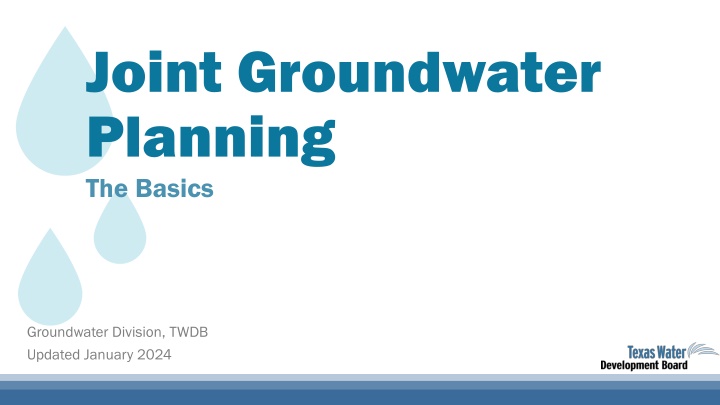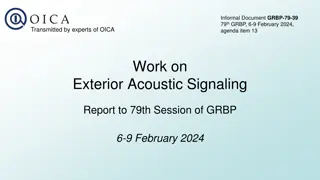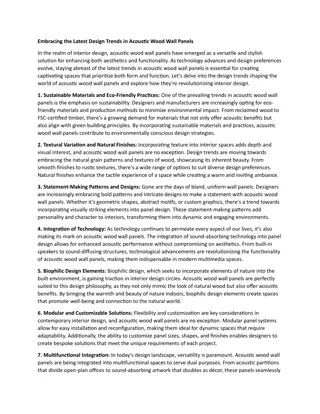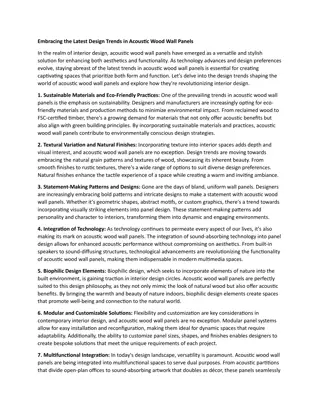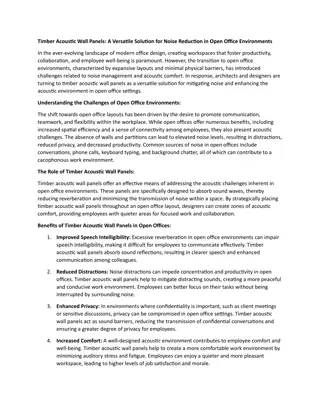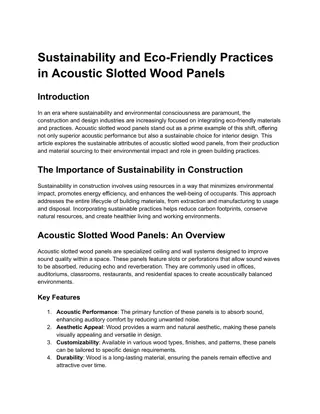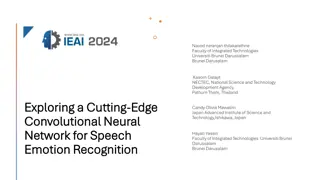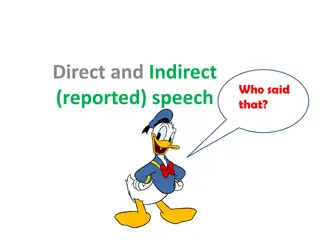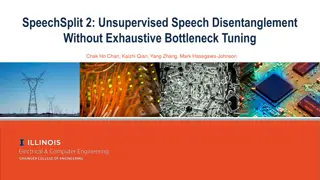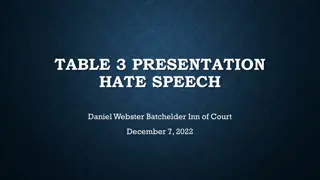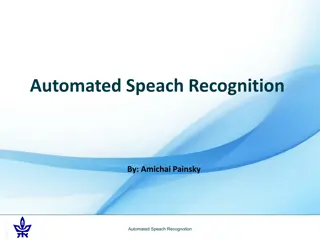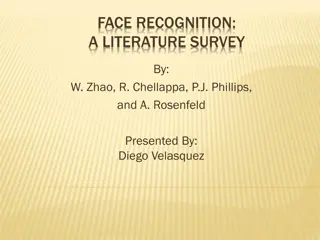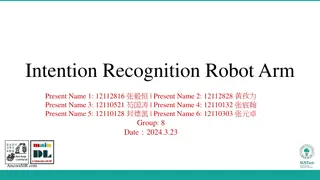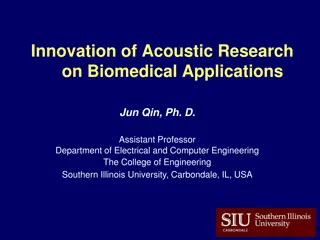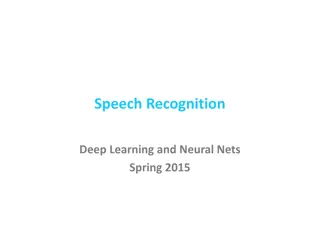Acoustic Features for Speech Recognition: MFCC to Bottleneck Features
Acoustic features are crucial in speech recognition systems, such as Mel-Frequency Cepstrum Coefficients (MFCC) and Bottleneck Features (BNF). These features describe speech signal characteristics at each time instant, enabling ASR systems to convert them into word sequences through machine learning models. The design of acoustic features must consider noise robustness and speaker invariance for effective ASR performance. Explore the evolution from human knowledge to data-driven methods, including supervised machine learning and Deep Neural Networks (DNN), to enhance speech recognition accuracy.
Download Presentation

Please find below an Image/Link to download the presentation.
The content on the website is provided AS IS for your information and personal use only. It may not be sold, licensed, or shared on other websites without obtaining consent from the author.If you encounter any issues during the download, it is possible that the publisher has removed the file from their server.
You are allowed to download the files provided on this website for personal or commercial use, subject to the condition that they are used lawfully. All files are the property of their respective owners.
The content on the website is provided AS IS for your information and personal use only. It may not be sold, licensed, or shared on other websites without obtaining consent from the author.
E N D
Presentation Transcript
Joint Groundwater Planning The Basics Groundwater Division, TWDB Updated January 2024
This presentation was created by TWDB Groundwater Division staff for general educational purposes. We hope this slide deck is useful in communicating the joint groundwater planning process, and the steps required to get from desired future conditions to modeled available groundwater.
Well cover Groundwater management areas What is joint groundwater planning? What does the desired future condition process look like?
GMAs, GAMs, MAGsOMG! Groundwater conservation district Groundwater management area GCD GCD GMA GMA Desired future condition DFC DFC Texas Water Development Board Groundwater availability model TWDB TWDB GAM GAM Modeled available groundwater MAG MAG Regional water planning group RWPG RWPG
Groundwater management areas
Groundwater conservation districts (GCDs) Preferred method of groundwater management in Texas
Groundwater management areas (GMAs) Groups of groundwater conservation district (GCDs)
Groundwater management areas (GMAs) Generally follow major aquifer boundaries
The TWDB maintains webpages for each groundwater management area. And many GMAs also have their own websites to share information with the public.
Joint Groundwater Planning
What is joint planning? District representatives in a GMA meet at least annually to: conduct joint planning propose to adopt new or amended desired future conditions review management plans and GMA accomplishments Texas Water Code 36.108
Most joint planning activities are related to desired future conditions (DFCs)
Desired future conditions DFCs Broad policy goal Quantitative description Updated at least every 5 years Used to determine future groundwater availability Texas Water Code 36.108
Desired future conditions DFCs Drawdown, springflow, storage volume, etc. For relevant aquifers May be established for: aquifer aquifer subdivision geologic strata geographic area
Relevant vs. Non-relevant for joint planning purposes Relevant Official major or minor aquifers or any local aquifers deemed relevant by GMA Non-relevant Parts of a relevant aquifer that do not warrant a DFC based on aquifer characteristics, GW demands, and current GW uses
Non-relevant an unfortunate name Technical justification required Local aquifer management is still happening Regional water planning groups determine groundwater availability
Why DFCs matter Districts must manage production to achieve desired future conditions A criteria for GCD planning and rule making Results in modeled available groundwater that can be used to evaluate permit applications
Why DFCs matter Modeled available groundwater = water availability components that feed into regional water plans and state water plan Influence policy and resource management decisions that affect all Texans
TWDB groundwater availability models Modeled available groundwater GCDs & RWPGs Desired future conditions GCDs & advisors GMA Groundwater availability Science Policy
90-day public comment period GMA submits explanatory report to TWDB with model files GMA proposes to adopt DFCs by May 1, 2026 GMA adopts DFCs by January 5, 2027 Each district has a public hearing
90-day public comment period GMA submits explanatory report to TWDB with model files GMA proposes to adopt DFCs by May 1, 2026 GMA adopts DFCs by January 5, 2027 Each district has a public hearing Good time for stakeholder involvement is now, at the beginning of joint planning round, far before any DFC proposals happen Joint planning meetings leading up to DFC proposal
GMA proposes to adopt DFCs by May 1, 2026 9 factors Aquifer uses and conditions Environmental impacts Property rights State water plan Land subsidence Feasibility Any other information Hydrologic conditions Socioeconomics
GMA proposes to adopt DFCs by May 1, 2026 A balancing act Conservation, preservation, protection, recharging, prevention of waste of groundwater, and control of subsidence Highest practicable level of groundwater production
Assessing DFC scenarios GMA proposes to adopt DFCs by May 1, 2026 GMAs often hire consultants to use groundwater availability models to assess various DFC scenarios Active participation in the process could get a scenario you want to see on the decision table.
DFC Explanatory Report GMA submits explanatory report to TWDB with model files Needs to include Each desired future condition Policy and technical justification Consideration of 9 factors Other desired future conditions considered and why those were not adopted Discussion of recommendations from advisory committees and relevant public comments Non-relevant aquifer documentation
TWDB GMA submits explanatory report to TWDB with model files determines if administratively complete
TWDB determines if administratively complete MAGs
Modeled available groundwater MAG Amount of water that may be produced on an average annual basis to achieve a desired future condition Calculated by the TWDB using GAMs Used in permitting decisions, among other information Provided to regional water planning areas as groundwater availability
TWDB determines if administratively complete GMA notified Districts update management plans 2 years Districts update rules Districts adopt DFCs MAGs 1 year
90-day public comment period Each district has a public hearing Propose to adopt DFCs by May 1, 2026 GMA Adopt DFCs by January 5, 2027 TWDB 60 days GCD Submit explanatory report with model files Administratively complete GMA notified 180 days 90 days Districts adopt DFCs MAGs Deficiencies
TWDB DFC Resources DFC webpage Guidance documents 2021 joint planning documents Groundwater Technical Assistance staff
Slides prepared by Natalie Ballew, P.G. Groundwater Division Director, TWDB 512-463-2779 natalie.ballew@twdb.texas.gov
